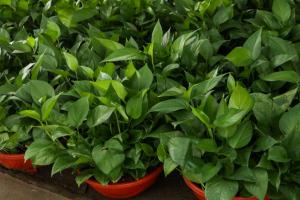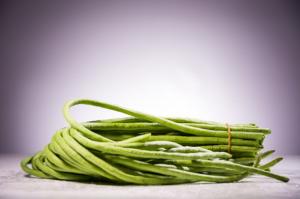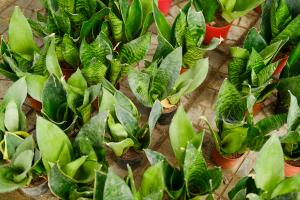Can I Use Potting Mix for Indoor Plants?
Potting mix is a popular choice for gardeners, especially those growing indoor plants. Potting mix is a soilless mixture designed to provide nutrients, drainage, and aeration to plants growing in containers. But is it a good choice for indoor plants? Let’s take a closer look.
What is Potting Mix?
Potting mix is a blend of materials that gardeners use to create a growing medium for plants growing in containers. Common ingredients in potting mix include peat moss, vermiculite, perlite, bark, and coconut coir. Potting mix is formulated to provide excellent drainage, aeration, and nutrient-holding capacity, which all contribute to healthy plant growth.
Is Potting Mix Good for Indoor Plants?
Potting mix can be an excellent choice for indoor plants. Unlike outdoor plants, which can have access to a wider range of nutrients and microorganisms in the soil, indoor plants rely entirely on the growing medium in their containers. Potting mix provides balanced drainage, aeration, and nutrition that can help indoor plants thrive.
What are the Benefits of Using Potting Mix for Indoor Plants?
There are several benefits to using potting mix for indoor plants:
Improved Drainage: Potting mix is designed to allow excess water to drain away quickly, which can help prevent root rot and other moisture-related problems.
Better Aeration: Indoor plants need access to oxygen, and potting mix provides plenty of air pockets to facilitate gas exchange.
Uniform Nutrition: Potting mix is formulated to provide a balanced mix of nutrients to help plants grow and thrive.
Lower Risk of Pests: Potting mix is usually sterile, which can help reduce the risk of pests and diseases affecting your indoor plants.
Are There Any Downsides to Using Potting Mix for Indoor Plants?
While there are many benefits to using potting mix for indoor plants, there are also some potential downsides to consider:
Potential for Overwatering: Because potting mix drains so well, it can be easy to overwater your indoor plants if you’re not careful.
Cost: Potting mix can be more expensive than other types of growing mediums, although the improved results are usually worth the extra cost.
Environmental Concerns: Some gardeners are concerned about the sustainability of using peat moss and other non-renewable resources in potting mix. However, there are many eco-friendly potting mixes available that use renewable materials like coconut coir instead.
Tips for Using Potting Mix for Indoor Plants
If you decide to use potting mix for your indoor plants, there are a few tips to keep in mind:
Choose the Right Mix: Different plants have different growing requirements, so make sure you choose a potting mix that’s appropriate for the types of plants you’re growing.
Monitor Moisture: Make sure you don’t overwater your indoor plants. Test the moisture level in the potting mix using your finger or a moisture meter, and only water when the top inch or so of soil feels dry.
Fertilize Regularly: While potting mix contains some nutrients, you’ll likely need to supplement with regular fertilization to keep your plants healthy.
Repot as Needed: Indoor plants can outgrow their containers quickly, so make sure you repot them as needed to prevent root-bound growth.
Conclusion
Potting mix can be an excellent choice for indoor plants, providing the necessary nutrients, drainage, and aeration for healthy growth. However, it’s important to choose the right mix for your plants, monitor moisture carefully, and fertilize regularly to keep your plants thriving. With the right care and attention, your indoor plants can flourish in a potting mix-based growing medium.

 how many times do yo...
how many times do yo... how many planted tre...
how many planted tre... how many pine trees ...
how many pine trees ... how many pecan trees...
how many pecan trees... how many plants comp...
how many plants comp... how many plants can ...
how many plants can ... how many plants and ...
how many plants and ... how many pepper plan...
how many pepper plan...
































